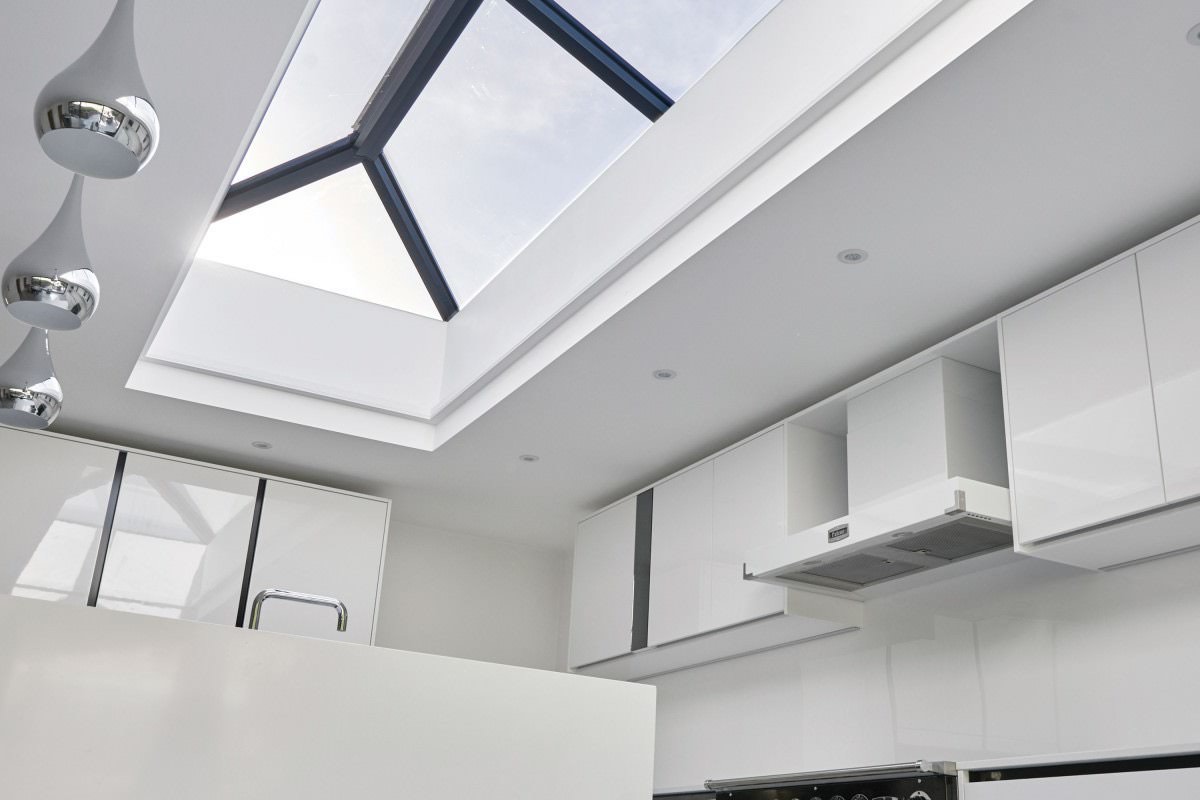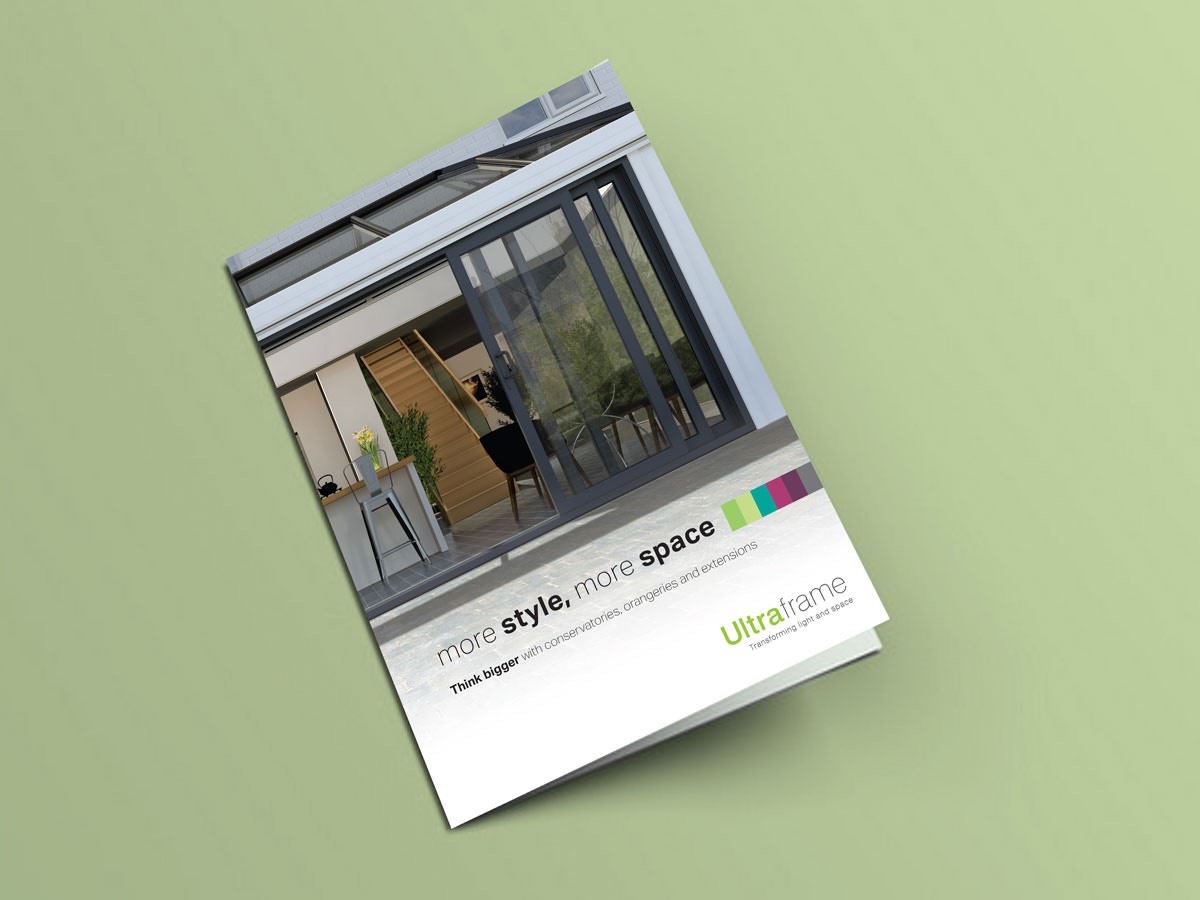Conservatory Insulations – The Risks
If you have an old conservatory that needs updating to make it into a room that is comfortable to enjoy, whatever the weather, you will no doubt have been doing research online and may have come across companies offering conservatory insulation.
Conservatory insulation companies offer a method of cladding an old conservatory roof which they ‘claim’ will transform it into a more usable, thermally efficient room.
This blog has been put together by Ultraframe – the UK and world leader in the design and manufacture of conservatory roof technology - to explain why choosing a conservatory insulation company is a dangerous idea. We will explain the many risks posed by conservatory insulation and what other options are available that really will provide you with a new room that is thermally efficient, warm, bright and structurally sound.
There are many risks associated with the addition of conservatory insulation to your old conservatory. Here we will explain each of the conservatory insulation risks and the possible impact each of them would have.

1. Drilling into the glazing bars during insulating a conservatory roof
The glazing bars on a conservatory roof are there primarily, as the name suggests, to hold the glazing in-between in place. However, Ultraframe glazing bars also have vitally important secondary functions – to provide rigidity and assist with ventilation and water drainage.
By drilling straight into this vitally important conservatory component during a conservatory insulation installation, both of these functions are compromised, meaning that the roof will be less strong and ventilation will decrease.
The glazing bars are highly technical components which feature gaskets, baffles and other components to ensure they provide a watertight seal against the elements, and so by drilling into the glazing bars at numerous points, conservatory insulation companies are exposing the conservatory to the risk of leaks as they have opened up a component that was designed to be completely sealed at all points.
2. Attaching timber and weight to the glazing bars during a conservatory insulation project
The next stage of a conservatory insulation installation is to attach timber to the length of the glazing bars. When your conservatory roof was originally designed, a large number of factors were calculated scientifically to ensure that it is structurally sound and, therefore, safe.
These factors include the glazing material (glass or polycarbonate), the size and shape of the roof, the weight of the roof and the geographical location. Location is a crucial factor, as a conservatory roof needs to be able to withstand the worst possible wind and snow loads that may be experienced at your exact location.
After considering all of these factors, a conservatory roof is designed, and calculations are performed to work out what strength of glazing bars are needed to ensure structural integrity. When a conservatory insulation company comes along and attaches timber batons right along the length of every glazing bar, they are altering the dynamics of the roof by placing a heavy load on it that was not allowed for during the original design calculations.
The worst-case scenario is that this load from the conservatory insulation timber could potentially lead to the collapse of a roof – especially on conservatories that are old.
Ultraframe is the only conservatory roof company to design every conservatory roof to the exact postcode of the location it will be installed to ensure it can withstand the worst of the wind and snow loads. This means that conservatories bearing a roof other than Ultraframe could be even more unstable following the installation of conservatory insulation if there is heavy snow or wind, and therefore, even more, likely to fail structurally once the additional load of conservatory insulation timber batons is placed upon them.
3. Complete thermal barrier from conservatory insulations
After attaching the timber batons, the next two stages in a conservatory insulation installation are to attach a thermal quilt followed by PCV cladding. These materials provide a complete thermal barrier, which conservatory insulation companies promote as a positive. However, there is no way of stopping a conservatory from being exposed to heat and heat build-up, it is something that naturally occurs during periods of warm weather or when heating a conservatory in cold weather, and that must be dealt with effectively to ensure adequate ventilation.
In Ultraframe conservatory roofs, this is done via a number of patented methods, including trickle ventilation through the ridge and twin chambered top cappings. The conservatory insulation method means that when heat enters the conservatory, it will be unable to leave, resulting in heat build-up in the roof space. The best-case scenario of this heat build-up is that the conservatory could become extremely warm and uncomfortable to be in following a conservatory insulation installation.
The worst case is that this heat build-up could dangerously affect the structural integrity of the roof and the entire conservatory structure. This is because, beyond the quilt that the conservatory insulation company applies, the glazing bars are made of PVC. If PVC becomes heated beyond a certain point, the material can swell and warp/twist. On a conservatory roof which has been altered with conservatory insulation, swelling/warping of the glazing bars could result in the bars not being sound enough to hold the glazing material any longer, and large sheets of polycarbonate or glass could move or fall from the roof.
4. A dark, gloomy room below following conservatory insulation
When any of us buy or inherit a conservatory, we want it to be a light and airy room. Bringing natural light into a room gives a feeling of space and also makes the room a more pleasant space to spend time in.
Covering your conservatory roof with insulation takes a roof that floods the space below it with light and changes it into a solid area which cannot be penetrated by light. This means that not only will the existing conservatory below become extremely dark and gloomy, but also the room/s adjoin to it – the natural light will also be cut off to these rooms. This is not the most dangerous risk of conservatory insulation, but still a very important one to consider.
5. Fire safety in conservatory insulations – or the lack of it!
The materials used in a conservatory insulation installation will undoubtedly add to the risk of fire spread and penetration in the event of a fire. This is because they were not part of the original conservatory structure and have not been tested for how they will perform in the event of a fire in conjunction with the materials of the existing roof.
Ultraframe conservatory replacement roofs are the only ones to be fully fire tested, so you can be sure that your new roof is safe for your home and your family.
6. Invalidating your conservatory guarantee with conservatory insulations
Drilling into your conservatory structure and attaching the quilting and cladding as part of the conservatory insulation installation process will completely invalidate any guarantees. In the event that you do experience any problems with your conservatory after it has been insulated, you will no longer be covered under warranty/guarantee.
Conservatory Insulation is a bad idea – so what is the solution?
Having read this information, I’m sure you will now realise that conservatory insulations are a poor and potentially dangerous idea. If you have an old conservatory that needs updating to make it into a room that is comfortable to enjoy, whatever the weather, there are far better options available than conservatory insulation that are safe, strong, thermally efficient and light.
These include the Ultraroof and Livinroof systems from Ultraframe. These are solid roof systems that can be used to transform an old conservatory roof, often in just a couple of days!

The systems do not cladover your old roof as conservatory insulations do – this would be removed and replaced with a new roof to ensure structural integrity. This new roof would be calculated for the specific weather requirements of your location, the window and doors frames it will sit on and other factors such as shape, size and whether you wish to include areas of glazing to ensure you get a replacement conservatory roof that is safe and a far better option than conservatory insulations.
Ultraroof and Livinroof are the strongest solid roofs on the market, and every one is engineered bespoke to the requirements of your existing conservatory for your complete peace of mind.
Far from being dark, gloomy spaces like those created by conservatory insulation, Ultraroof and Livinroof can be personalised with full-length glazed panels to ensure that your new room, and those adjoining, are flooded with natural light.

Ultraroof and Livinroof are also the warmest solid roofs on the market, offering unrivalled thermal performance far superior to that of conservatory insulations.
From an aesthetic point of view, you won’t still have to look at your old tired roof from the outside and a makeshift cladded roof from the inside as with conservatory insulations. Instead, Ultraroof offers a tiled finish externally, available in a choice of 3 colours to complement your existing roof, while Livinroof features a contemporary grey panel finish. Each of the systems can have multiple full-length glass panels at various points in the roof, unlike conservatory insulation, creating dark, oppressive rooms. From the inside, both Ultraroof and Livinroof offer a beautiful plastered ceiling, just like those in the rest of your home.
From a fire safety point of view, Ultraroof and Livinroof have both been fire tested as full systems and meet current UK legislation for fire safety. This means that they have been tested in terms of how all the components act together as a complete structure in the event of a fire rather than how each individual component would perform. With conservatory insulations, you are adding in materials that have not been assessed for how they would perform in relation to the rest of your existing conservatory in a fire – so adding to the risk. Also, both Ultraroof and Livinroof are fully compliant with Building Regulations and have been approved by JHAI and LABSS – the government approved Building Regulation certification companies.
If you require more information about Ultraroof or Livinroof, visit the products section of our website.
We hope that this blog has been useful in explaining to you why conservatory insulations are a potentially dangerous way of transforming your conservatory. Our families and homes are the most precious things we have, and conservatory insulation presents a real danger to both.





